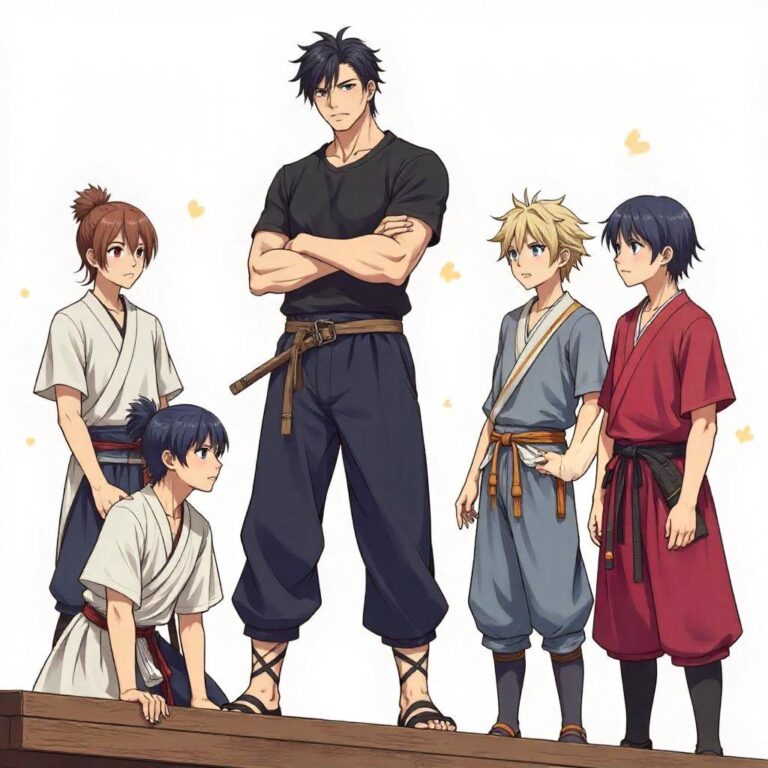Reader’s Question:
I have a question about a specific scene in the anime “Demon Slayer: Kimetsu no Yaiba,” particularly in the Hashira Training Arc. Just before the character Gyomei Himejima, the Stone Hashira, throws a iron ball that nearly hits Muzan Kibutsuji, I can’t quite catch what he says. I don’t
have the manga with me to check, and I’ve replayed the scene multiple times without success. Can someone please tell me what he says? Here’s the video link: https://youtu.be/7fJh_0w2wOc?t=214
Diving into the World of “Demon Slayer”: Hashira Training Arc Insights
Ah, “Demon Slayer: Kimetsu no Yaiba.” Where do I even start? If you’re anything like me, you’ve probably been captivated by its stunning animation, heart-wrenching storylines, and, of course, its unforgettable characters. So, when a fellow anime enthusiast reached out with a question about a specific scene from the Hashira Training Arc—specifically a moment involving Gyomei Himejima, the Stone Hashira—I couldn’t help but dive in. Let’s set the stage: Gyomei, with his massive physique and stoic demeanor, is about to throw an iron ball that nearly takes out the infamous Muzan Kibutsuji. The tension in that scene is palpable! But what really caught our reader’s attention is the line Gyomei utters just before he takes action.
The Elusive Line: “南無阿弥陀仏”
Now, if you’ve replayed that scene multiple times and still can’t catch what he says, I feel you. It’s like trying to catch smoke with your bare hands! But thanks to some eagle-eyed fans, it turns out Gyomei is saying “南無阿弥陀仏” (Namu Amida Butsu), which translates to “Homage to Amida Buddha.” It’s a phrase that reflects deep respect and reverence, and you can feel the weight of it in the air during that intense moment. Interestingly, the anime takes a slightly drawn-out approach with Gyomei’s pronunciation. He says it almost like “南無阿弥~、陀仏” (Namu Amida… Butsu), which can make it a bit more challenging to catch, especially if you’re not familiar with the phrase or the cadence he uses. It’s funny how something so small can trip us up, right? It’s like when you’re at a karaoke bar, and you think you know the lyrics to that one song, only to have the music stop and everyone look at you. But I digress.
Gyomei Himejima: More Than Just a Strongman
Let’s take a moment to appreciate Gyomei as a character. He’s not just a powerhouse in combat; he embodies a kind of wisdom and humility that’s refreshing. When I watched him interact with the other Hashira, I couldn’t help but feel a sense of admiration. Here’s a guy who carries such physical strength but shows immense respect for the traditions he’s a part of. I remember my first trip to Japan and visiting a temple in Kyoto. I was struck by how the atmosphere was thick with reverence, much like what Gyomei embodies. It’s a reminder to slow down and appreciate the beauty around us, even when things get chaotic—kind of like how life is sometimes. When I see characters like Gyomei, I can’t help but reflect on my own values and how I can bring a bit more of that spirit into my daily life.
The Hashira Training Arc: A Blend of Power and Growth
The Hashira Training Arc really taps into the idea of growth through struggle. Each character has their own baggage, their pasts filled with pain and loss, and yet, they come together in this intense training environment. It’s like being thrown into the deep end of a pool and having to learn how to swim—except, you know, with demons lurking about! Watching the Hashira train is reminiscent of those late-night jam sessions with friends where you’re all trying to improve your skills, whether that’s playing an instrument or playing video games. There’s a level of camaraderie that forms when you’re all pushing each other to do better, to overcome your weaknesses. It’s that shared struggle that fosters growth, and I think that’s beautifully captured in the series.
Reflections on Life, Fatherhood, and Humor
As someone who has a deep love for comedy—especially manzai, which is such a staple in Japan—I can’t help but draw parallels between humor and the struggles depicted in “Demon Slayer.” Life can be tough, and we often find ourselves in situations that feel overwhelmingly serious. But sometimes, the best way to cope is to find the humor in it! I remember a particularly chaotic day with my little one, where everything went wrong, from spilled juice to a tantrum over the color of the crayon. At one point, I just had to laugh at the absurdity of it all, like I was living in my own slice-of-life anime episode. It’s in those messy moments that we often discover the beauty of life—and honestly, they make the best stories later on! Ultimately, both the episodes of “Demon Slayer” and our everyday lives teach us that strength isn’t just about physical prowess; it’s about how we carry ourselves through life’s challenges and the lessons we learn along the way.
Bringing It All Together
So, to answer the reader’s question about Gyomei’s line—yes, he is saying “南無阿弥陀仏,” and it’s a beautiful phrase that encapsulates so much more than just his words. It’s a moment of respect, a reminder of his strength, and a nod to the traditions that ground him. Anime has a way of reflecting real-life experiences, and “Demon Slayer” does this exceptionally well. Whether you’re a die-hard fan or a casual viewer, there’s something to take away from the journey of these characters. So, the next time you catch a scene that leaves you puzzled, take a moment to appreciate it—not just for the action, but for the depth it brings to storytelling. And hey, if you ever find yourself stuck on a line again, remember that the community is here to help. Whether it’s for a nuanced phrase or a deeper character analysis, there’s always someone ready to dive into the discussion with you! Now, if only I could get that karaoke song right…



